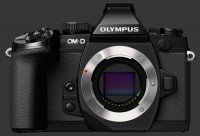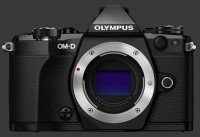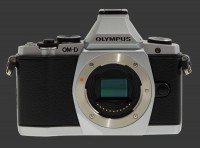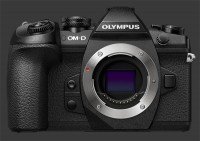Olympus OM-D E-M1 Mark II Review
Olympus OM-D E-M1 Mark II Introduction
As the newest flagship Micro Four-Thirds Mirrorless Digital Camera from Olympus, the Olympus OM-D E-M1 Mark II is designed to take the Micro Four-Thirds system to the next level. The E-M1 Mark II is built around a newly designed 20 megapixels Four-Thirds sensor with extremely fast throughput, allowing it to capture full-resolution images at an outstanding 60 FPS and record Cinema 4K video at 24 FPS. This sensor features a 121-point Phase-Detect AF system built-in, this time usable with Micro Four-Thirds as well as adapted Four-Thirds lenses.
The Mark II inherits every feature of the original E-M1 reviewed here
Olympus OM-D E-M1 while significantly expanding autofocus and continuous shooting capabilities. The new AF system offers both Contrast-Detect and Phase-Detect around 121 points with good coverage of the frame. It adds Focus Bracketing and Focus Stacking of up to 999 frames plus fine-tuning over Tracking AF. A hybrid shutter functions in electronic mode up to 60 FPS or in mechanical mode up to 15 FPS, with full Continuous AF and Metering between frames up to 18 FPS. The high-speed electronic shutter supports shutter-speeds of up 1/32000s and allows completely silent shooting and form the basic of the 50 megapixels High-Resolution mode, similarly to the E-M5 Mark II
Olympus OM-D E-M5 Mark II.
Olympus completely reworked video capabilities in the E-M1 Mark II. Cinema 4K at 24 FPS and Ultra-HD 4K at 30 FPS are its headline features but everything from capture to compression and output has been reworked. Audio is now highly configurable with stereo mini-jack connectors for both input and output. Full manual controls and independent customization of the camera in video mode delivers a completely different shooting experience. In-camera Time-lapse are still supported with the resolution pushed to 4K.
The OM-D E-M1 Mark II is truly a professional-grade mirrorless camera. It offers a large 0.5" EVF with 0.74X magnification, 100% coverage and an Eye-Start Sensor in a weatherproof and freezeproof body. This camera offers a large number of external controls, including dual control-dials and no less than 7 customizable buttons, plus dual SDXC memory card slots.

This digital camera review covers the performance and image quality of the Olympus O-MD E-M1 Mark II.
Olympus OM-D E-M1 Mark II Features
Sensor
- 20 Megapixels CMOS Four-Thirds sensor
- No Anti-Alias Filter
- Micro Four-Thirds lens mount
- 5-Axis Sensor-Shift image stabilization
- Built-in ultra-sonic dust-reduction
- 50 Megapixels High-Res Capture
Exposure
- ISO 200 - 25600 sensitivity, 1 or 1/3 EV steps
- Expanded Low ISO 100 sensitivity
- Auto ISO, customizable limit from 200 to 25600
- 1/8000 - 60s Mechanical Shutter-speeds
- 1/32000 - 60s Electronic Shutter-speeds
- 1/3, 1/2 or 1 EV steps Shutter-speed steps
- Bulb up to 30 minutes, Live-Bulb or Live-Time
- PASM Exposure modes
- Program-Shift in P mode
- EC: ±5, 1/3, 1/2 or 1 EV increments
- Exposure-Shift, ±1, 1/6 EV increments
- Multi-Segment, Center-Weighed, Spot, Shadow Spot and Highlight Spot metering
- Auto-Exposure Bracketing, 3, 5 or 7 frames, max 1 EV steps except 1/2 EV for 7 frames
- Built-in HDR, 2 blending levels
- Flash-Compensation, ±3, 1/3 or 1/2 EV steps
- Auto, Redeye, Forced, Off, Slow-Sync+Redeye, Slow-Sync, Rear-Sync and Manual flash modes
- Manual flash power between full and 1/64th power
- Remote-Control flash
Image Parameters
- AutomaticTwo types: Normal and Warm-preserving., 7 presetsSunny, Shade, Cloudy, Incandescent, Fluorescent, Underwater, Flash, Kelvin and Custom White-Balance, 4 memories
- White-balance fine-tuning along 2 axis in 15 steps
- Digital white-balance preview
- Optional One-Touch custom white-balance
- Optional Long-Shutter Noise-Reduction
- Optional High-ISO Noise-Reduction, 3 levels
- 5 Color and 1 B&W Picture Modes
- Adjustable Contrast, Sharpness and Saturation, 5 steps each
- Adjustable Gradation, Automatic or 3 levels
- Adjustable tone curve, 15 steps for highlights and 15 steps of shadows
- sRGB or Adobe RGB color space
Output Processing
- 4:3 Native aspect ratio
- 3:2, 16:9, 1:1 and 3:4 cropped aspect ratios
- JPEG, RAW, RAW+JPEG capture
- 4 JPEG Compression levels
- Optional Vignetting compensation
- Optional Keystone compensation
Focus
- Single-Shot (AF-S), Continuous (AF-C), Direct Manual-Focus (DMF), or Manual Focus
- 121-point Phase-Detect plus Contrast-Detect AF
- Focus Bracketing, 3-999 Frames, 10 step sizes
- Optional Focus Stacking
- Optional Manual Focus-Assist, 5-14X
- Optional Face-Priority
- Optional Focus-Peaking
- Optional Face-Priority
- Optional Bulb focusing
- Optional AF-Assist lamp
- Optional AF Fine-Tuning
- Optionally reset lens focus to infinity
- Controllable focus-ring direction
Drive
- 60 FPS, 48 RAW files or 48 JPEG images, Electronic Shutter
- 18 FPS, 77 RAW files or 105 JPEG images, Electronic Shutter
- 15 FPS, 84 RAW files or 117 JPEG images, Mechanical Shutter
- 10 FPS Unlimited JPEG
- 8.5 FPS Anti-Shock Drive
- Optional Pre-Buffering, Max 14 frames
- Time-Lapse, 1-999 frames, 1s-24h interval, 0-24h delay, optional video, AVI M-JPEG Codec
- Multiple-Exposure, 2 frames, optional automatic gain and composition overlay
- Self-timer, 2s or 12s or Custom
- Custom Timer: 1-30s, 1-10 Frames, ½-3s Interval
- Anti-Shock & Silent Shutter-Delay: 0-30s
Video
- 4096x2160 @ 24 FPS Cinema 4K
- 3840x2160 @ 30 FPS Ultra-HD 4K
- 1920x1080 @ 60 FPS Video
- Quicktime H.264 Codec
- PASM video exposure modes
- Automatic and Art-Filter video modes
- Built-in Stereo microphone:
- ±10 Input Gain
- Optional Volume Limiter
- Optional Wind Noise-Reduction, 3 levels
- Stereo audio input mini-jack
- Stereo audio output mini-jack, 16 levels
- Video-only button and dial customizations
Display & Viewfinder
- 0.5" EVF, 2.4 Megapixels
- 100% Coverage, 0.74X Magnification
- Eye-start sensor
- Digital-level, 2-Axis
- Rotating 3" Touchscreen LCD, 1 Megapixels
- Optional Live-Histogram
- Optional guidelines, 6 types
- Adjustable brightness, 15 steps
- Adjustable color temperature, 15 steps
Controls
- Dual control-dials
- 8 Customizable buttons
- AE-L/AF-L hold and toggle modes
- Customizable AE-L metering mode
Connectivity
- Hot-Shoe & Sync Port for external lighting
- HDMI (4K) output
- USB 2.0 connectivity
Misc
- Weather-sealed body
- Freezeproof down to -10C
- Built-in WiFi
- Dual SDXC memory slots
- Proprietary Lithium-Ion battery
- Customizable battery warning
- Customizable DPI settings
NOTE The Olympus OM-D E-M1 Mark II is extremely similar to its predecessor. Differences between it and the original E-M1 are highlighted below in green throughout this page.
Olympus OM-D E-M1 Mark II Capability - What can it do?
The Olympus OM-D E-M1 Mark II is one of the most feature-rich digital cameras to date. It offers all features needed by professional photographers and videographers plus quite a lot more. Its 20 megapixels anti-alias-filter-free sensor captures enough details for relatively large prints. The ISO 200-25600, expandable to include ISO 100, is now standard for interchangeable lens digital cameras and sufficient for photography down to moderately low light-levels. Low-light performance is pushed further with an outstanding 5-axis image-stabilization system effective to 5½-stops, making it possible to shoot handheld at lower sensitivities.
Take a look how sharp a handheld photo can be even at a 1s exposure, then click on the ISO/Shutter-Speed pair below to see the compromises possible:
Extremely large prints are possible using Super-Resolution mode which produces a 50 megapixels image from 8 separate exposures with the sensor shifted in-between. This is available from ISO 100 to 1600 and results in lower image-noise due to averaging of pixels. Any motion in the scene may cause problems and there is a significant delay in capturing and producing the output though. Look at the comparative crops page to see the results.
Its class-leading 1/32000s to 60s shutter-speed range can freeze ultra-fast motion as well as capturing light-trails. Longer exposures up to 30 minutes are possible using Bulb mode which features Olympus' unique Live-Bulb and Live-Time modes that makes it possible to see an exposure progress as it is captured. This makes it possible to photograph star-trails and is immensely useful when taking pictures of fireworks and light painting when exposure is impossible to predict.

Experimentation is made easy with the E-M1 Mark II by its extensive bracketing options. AEB is possible for up to 7 frames, while ISO, WB and Flash can be bracketed for 3 frames. New to the Mark II is Focus-Bracketing which can capture stacks of up to 999 frames. Just like it can use AEB to blend exposures to simulate HDR capture and tone-mapping, it can produce an image with increased depth-of-field from a focus-bracket.
Here is the same scene shot as a single exposure and triple exposures merged with HDR 1 and HDR 2 blending, respecitively. Below is a 100% crop from each resulting image to show the impact of the merging process on details. Thumbnails are linked to straight-of-camera full-resolution versions of each image.
Single Exposure
HDR 1
HDR 2
As expected, the E-M1 Mark II offers complete control over exposure with a choice of metering systems: Multi-Segment, Center-Weighed, Spot, Highlight Spot and Shadow Spot. These last two options have been exclusively available on Olympus digital cameras for a while. The work similarly to Spot metering expect using a highlight or shadow, respectively, to set the overall exposure. When not using an exposure-target, Highlight Spot is easier to use than traditional Spot since it is easier to guess what is a highlight than a mid tone. Every type of White-Balance is supported with Kelvin and Custom WB option for completeness. WB Fine-Tuning along 2 axis in 15 steps is available for further adjustments.
The real leap from the original E-M1 to the Mark II version comes from its continuous drive and improved shutter. The electronic shutter can capture full 20 megapixels images at a top-of-class 60 FPS. This is too fast for the camera to autofocus and meter between each frame, so both focus and metering remain locked at the first frame down to 18 FPS. The mechanical shutter too delivers a best-in-class performance with a top-speed of 15 FPS, all while continuously metering and auto focusing between frames. This puts the E-M1 Mark II well into action photography territory, besting every DSLR in this area and is the feature most-likely to command the high-price of the Olympus OM-D E-M1 Mark II.
Supporting this exceptional speed is a new hybrid autofocus system. While the first E-M1 originally introduced Phase-Detect AF to Micro Four-Thirds, its use was limited to adapted legacy Four-Thirds lenses. The Mark II sensor sports a 121-Point hybrid autofocus system that combines Phase-Detect and Contrast-Detect AF at all those points to focus extremely quickly and accurately. Since focusing is performed on-sensor, this digital camera offers a large number of focusing aids: Focus Assist, Focus Check and Focus Peeking. Autofocus is extremely flexible with Direct Manual Focus, Tracking AF and Face-Priority AF available.

The Olympus OM-D E-M1 Mark II has quite possibly the longest list of Drive Modes available on any camera. The usual Single-Shot, Continuous and Self-Timers are all there, plus Interval Timer and Multiple Exposure. All modes are even customizable with Quiet and Anti-Shock versions These use an Electronic Front-Curtain Shutter (ECFS) or fully Electronic Shutter to reduce camera shake and noise, repectively. There is a highly customizable Self-Timer. Continuous shooting modes have pages of options in the Settings menu to control speed, shutter-type and pre-buffering in the case of Pro Capture mode. The camera can also assemble a sequence of images to produce a 4K Ultra-HD Time-Lapse in-camera.
This mirrorless does not offer a built-in flash but supports external lighting via a standard hot-shoe and sync-port. An on-camera flash can be used as Wireless Commander for remote and multi-flash setups. Gone is the proprietary accessory-port with the E-M1 Mark II, giving a lower profile to the viewfinder hump. The built EVF itself is a 0.45" unit which shows 0.74X magnification and 100% coverage. It has an essential Eye-Start Sensor with just the right sensitivity and very short delay. The back of the camera features a rotating 3" touchscreen LCD that is more flexible than on its predecessor while appearing relatively durable.
Professionals are well-served by dual SDXC memory-card slots that are extremely configurable. One can use the cards for increasing storage, separating files by type or creating a real-time backup of all images. The only feature omitted from the dual-slot setup is that there is no way to delete images from both cards at once. With such a fast camera, memory can get filled up too quickly. To be fair, only a handful of cameras offers this.
Video features have exploded in the Mark II. This happens to be the first Olympus Micro Four-Thirds to record 4K video. It can do so in the standard Ultra-HD resolution which is 3840x2160 and has the same 16:9 aspect-ratio as HD video. It also supports the less-common 4096x2160 known as Cinema 4K that has a slightly wider aspect-ratio, only at 24 FPS instead of 30 FPS. Both video formats are stored at 100 Mbps in Quicktime format using the H.264 codec. The E-M1 Mark II adds extensive options for audio plus embedded time-code.
Olympus OM-D E-M1 Mark II Performance - How well does it take pictures?
Performance starts with image quality, which is the criteria used as the foundation of our digital camera ratings. Ergonomic issues may get in the way, but in the end, image quality counts the most. For an ILC, image quality greatly depends on the lens used. While color, noise, exposure and dynamic-range are properties of a camera, distortion, vignetting and chromatic aberrations are properties of the lens. Sharpness and contrast depend on the weakest link. That is, a camera cannot capture more details than a lens lets through. Conversely, it is quite possible for a lens to transmit more details than a sensor can capture.
Image Noise & Details
The Olympus OM-D E-M1 Mark II delivers outstanding image-quality for a Micro Four-Thirds camera, besting the original E-M1, despite an increase in resolution from 16 to 20 megapixels. While previous generation Micro Four-Thirds cameras narrowed the gap between Micro Four-Thirds and APS-C, the latest generation of APS-C sensors significantly improved and are leaving Micro Four-Thirds further behind than it has been since the E-M5
Olympus OM-D E-M5. The difference is dramatic in low-light yet not so much in bright light.
Image noise is extremely low until ISO 800 and barely there at 1600 where it remains usable for relatively large prints. ISO 3200 shows a fine pattern of visible noise. The finest details get very slightly soft yet this sensitivity remains quite usable for medium-sized prints. There is another further increase in noise at ISO 6400, still mostly luminance noise, along with damage to fine details. A mid-size print would remain acceptable without much issue.
There is a notable leap in image-noise at ISO 12800. It is almost all luminance noise but stronger than at ISO 6400. Small details really get eaten away at this leveling, leaving this only usable for small prints. Remarkably though, the E-M1 Mark II maintains excellent color and contrast at this sensitivity. ISO 25600 though is very noise and quite soft, there is not much that can be done with it. This is an improvement over previous Micro Four-Thirds sensors yet not enough to make this usable.
Three levels of noise-reduction are available. NR can also be turned off entirely which avoids increased softness at high sensitivities. Best results are obtained with Noise-Reduction turned off and Sharpness at +1. Anything higher shows clear sharpening artifacts on this camera which does not have an anti-alias filter.

Color & White Balance
Color accuracy of the OM-D E-M1 Mark II is similar to its predecessor. Natural style delivers reasonable colors. Still, the red channel always remains too high. Default Saturation is punchy yet not overdone. Dialing it down one step produces more natural results. Similarly, the default contrast is high. This produces deep images at the expense of shadow detail. Luckily, all OM-D cameras offer fine control over the tone-curve, independently for shadows and highlights, with a global contrast setting too.
Automatic While-Balance is disappointing. Results are highly variable and even shooting in broad daylight can lead to a bluish tint. Indoor lighting is particularly difficult for the E-M1 Mark II where it sometimes leaves a strong yellow cast even with the Preserve Warm Colors option turned off. Any of the preset immensely helps and Custom WB is spot on. This is a little more work yet makes it possible to capture neutral colors under most lighting conditions.
Exposure
This digital camera has a reasonable multi-segment metering system. Scenes which fall within its dynamic-range are exposed towards the mid-tone which makes them look natural. High contrast-scenes are rendered brightly which causes more highlight clipping than usual. Most scenes get properly exposed though unless backlit. One can fine-tune exposure and gradation to improve results as needed, although it has to be redone frequently since it really depends on the scene.
The Olympus OM-D E-M1 Mark II shows one of the best dynamic-range from a Micro Four-Thirds sensor, only arriving in second place by a fraction of a stop. Compared to modern APS-C cameras, the gap is now significant with those capable of handling over 1½ stops more dynamic-range. This is considerable disadvantage for landscape photography where directly illuminated areas and shadows frequently share the scene.

Auto Focus
One of the major additions to the Mark II version of the E-M1 is a completely new hybrid autofocus system that is usable with any autofocus-capable lens, not just adapted Four-Thirds mount ones. Previously, Olympus had claimed that Contrast-Detect was superior for the Micro Four-Thirds platform. With its new outstandingly fast continuous drive, the Olympus OM-D E-M1 Mark II must be capable of focusing as fast as possible while being interrupted by the shutter mechanism 18 times per second. As a reminder, when shooting faster than that, the camera locks focus on the first frame. Virtually no digital camera can match this autofocus performance.
Autofocus is performed using a feedback loop that gathers contrast and phase data at 121 points right on the sensor. Contrast-Detection can determine critical focus while Phase-Detection can measure the out-of-focus distance and direction. This hybrid AF-system focuses incredibly fast and is highly sensitive to light. As with any on-sensor autofocus system, this one cannot suffer from any front or back focusing issue. Still, Olympus includes AF Fine-Tuning in case there is an issue with some lenses. This is no infallible as certain lenses may exhibit focus-breathing which shifts the plane of focus when stopping down for the exposure, while autofocus is performed with the aperture wide-open.
In the bid for such best-in-class AF speed, the E-M1 Mark II sacrifices some accuracy. More than 95% of the time, autofocus is spot-on down to moderately low light-levels. In good light, focus misses are extremely rare. The only autofocus accuracy issue observed during the review period is that the presence of small light sources can throw off focusing completely. When shooting at night in places with lights or lamps, the E-M1 Mark II is often unable to focus when the light is anywhere near the active AF-point. This is solved by simply moving the AF-point away from the light source. Luckily, the EVF is extremely sharp and focus errors are immediately apparent, so this situation is unlikely to go unnoticed.
There is a new Pre MF mode on the Mark II, in addition to the AF-S, AF-C, DMF and Tracking AF available on the original. Pre MF allows autofocus to be performed once separately and shots to be taken with the focus-distance to its preset value. This is a way to overcome the issue with lenses that reset the focus-distance when switching from AF to MF mode.
With most Micro Four-Thirds lenses, focus is done via a fly-by-wire ring around the lens-barrel. The E-M1 Mark II keeps up well with no perceptible lag. In DMF mode, a slight turn of the focus-ring shifts into manual focus. Because the ring is fly-by-wire, the E-M1 Mark II can reverse the direction for focusing except for those few lenses with a mechanical focus-ring.

Speed
The E-M1 Mark II is built for speed. It is one of the fastest digital cameras ever made, regardless of type, and is extremely responsive. Every single button, switch and dial gets an immediate response. The Eye-Start Sensor instantly toggles the EVF which manages to keep up with action incredibly well. One of the dual SDXC memory-card slots offers UHS-II throughput, allowing the buffer to clear faster than the second slot.
Continuous drive speed is best-in-class, reaching 60 FPS at full-resolution when using the electronic-shutter or 15 FPS when using the mechanical-shutter. The hybrid shutter itself offers the fastest speeds for both electronic and mechanic mode at 1/32000s and 1/8000s respectively. The electronic shutter is completely silent. When shooting in Pro Capture mode, getting 60 images in a second of holding down the shutter without hearing any noise seems like magic! Just be ready to sort through that many pictures later.
In use, the Olympus OM-D E-M1 Mark II rarely holds back the photographer. The main exception if High Res capture mode where a single press of the shutter-release produces a single image from 8 individual exposures and blends them together. The display goes blank at the beginning and end of the process, while it shows intermediate frames in between.
The following measurements characterize the performance of the OM-D E-M1 Mark II:
- Power-On: ½ second. Excellent.
- Power-On to First-Shot: 1 second. Superb.
- Autofocus: Faster than ¼s even in dim light, slightly more in very low-light. Class-leading!
- Shutter-lag: Instant with virtually no blackout. Best-in-class.
- Shot-to-shot: Under ½s. Impressive.
- Playback: ¼s to enter, instant to exit. Excellent.
- Power-Off: ½ second. Very good.
- Video: 1s to start but stops instantly. Slow.
With exception of the one second delay to start recording video, the Olympus OM-D E-M1 Mark II delivers an unprecedented performance. Every aspect of speed is best-in-class or very close. This camera particularly delivers on its promise of speed with its combination of instant shutter-lag, no black-out and ultra-fast autofocus system.
The 60 FPS continuous drive with focus locked on the first frame works incredibly well. The Olympus OM-D E-M1 Mark II keeps shooting at a consistent pace and manages to keep the view of the EVF or LCD close to the action. This makes the Olympus OM-D E-M1 Mark II suitable for action photography, a rarity among mirrorless cameras. Slower drive modes perform just as well, only with a very short blackout when the mechanical shutter is involved, which happens below 18 FPS.
The Olympus OM-D E-M1 Mark II is powered by a proprietary Lithium-Ion battery which provides 440-shots per charge. This is below average for a professional camera and, given how fast the E-M1 Mark II shoots, does not last very long. A couple or more extra batteries are highly recommended to last a full day of photography.
Olympus OM-D E-M1 Mark II Conclusion

Action photography is the ultimate stronghold for DSLRs and Olympus is aiming the OM-D E-M1 Mark II straight at it. This flagship mirrorless camera is designed to leap forwards in terms of speed and it absolutely delivers. Its top 60 FPS continuous drive and 18 FPS maximum sequential speed with Continuous Tracking AF is nothing short of exceptional. That combined with an ultra-fast hybrid shutter that can reach mechanical speeds of 15 FPS and best-in-class shutter-speeds of 1/8000s and 1/32000s, in electronic mode, allows the E-M1 Mark II to capture action better than most professional digital cameras.
The newly-developed hybrid 121-point autofocus system delivers a superb performance by combining on-sensor Phase-Detection and Contrast-Detection as one of the fastest autofocus systems on the market. Tracking speed and hit-rate is excellent with only occasional focus-misses in scenes where small light sources are present. One can efficiently move the control-point from such an offending light to get the E-M1 Mark II to lock focus perfectly.
Image quality from the Olympus OM-D E-M1 Mark II is really good. How good depends on the basis of comparison. Clearly, the Mark II produces some of the highest-quality images among digital cameras with a Four-Thirds sensor. Noise-levels are exceptionally low and produce highly usable images until ISO 3200. Dynamic-range is fairly good for this sensor-size. Now, when compared with similarly priced digital cameras, which are mostly APS-C models but even includes some full-frame ones, image-quality simply cannot compare. Modern larger-sensor cameras produce much less image-noise and have notably higher dynamic-range.
The TruPic VIII processor in the OM-D E-M1 Mark II renders JPEG images very well. Images are richly detailed with realistic colors and good contrast. Much of the look can be fine-tuned with only an unavoidable tinge of red. Automatic White-Balance though could really stand to be improved yet is an extremely easy issue to workaround, given how much control of WB this camera provides. The multi-segment metering system of the E-M1 Mark II performs exceptionally well and requires less Exposure-Compensation than most cameras.
This mirrorless camera offers an unusually rich feature-set which includes everything needed by professional photographers plus much more, including an Interval Timer with Time-lapse Video feature, Focus Bracketing with Focus Stacking, Cinema and Ultra-HD 4K video modes with full manual-controls. The camera itself is highly customizable and has enough physical controls to put a good number of features on hand. Ergonomically, the E-M1 Mark II is comfortable to use and remains so even while wearing gloves which may be needed when using its durable weatherproof and freezeproof body.
The Olympus OM-D E-M1 Mark II is a camera to choose for its speed. Its ultra-fast continuous drive, hybrid autofocus and shutter make it the fastest professional digital camera on the market. While it has a lot going for it, the high-price of the OM-D E-M1 Mark II makes it a highly specialized camera, one that is focused on action photography above all else. There is no doubt that it makes a worthy contender for that type of photography.
 |
Please Support Neocamera
All information on Neocamera is provided free of charge yet running this website is a huge endeavor. Purchases made via affiliate links found throughout the site help keep it running and up-to-date. There is no additional cost to you, so please consider buying via these links to our affilates:
Thank you for your support!
Olympus E-M1 Mark II Highlights

Sensor-Size: 17 x 13mm

Actual size when viewed at 100 DPI
| 20 Megapixels Mirrorless | ISO 64-25600 |
| Micro Four-Thirds Mount 2X FLM | Shutter 1/32000-60s |
| 5-Axis Built-in Stabilization, 5.5-Stop Improvement | Full manual controls, including Manual Focus |
| 0.45" Built-in EVF 2.4 Megapixels (0.74X) | Custom white-balance with 2 axis fine-tuning |
| Automatic Eye-Start sensor | Spot-Metering |
| 2 Axis Digital Level | Hot-Shoe & Sync-Port |
| Weatherproof down to -10C | Stereo audio input |
| Built-in Dust Reduction | Lithium-Ion Battery |
| 60 FPS Drive, 48 Images | Secure Digital Extended Capacity x 2 |
| 4096x2160 @ FPS Video Recording | |
| 3" LCD 1 Megapixels |
Usability
The Olympus OM-D E-M1 Mark II is externally nearly identical to its predecessor. The accessory-port has been removed. Otherwise, the Mark II has exactly the same buttons and dials in exactly same location. Refer to the E-M1 review
Olympus OM-D E-M1 for a full analysis of its usability.
Every control on the E-M1 Mark II is identical to its original, down to the labelling. What Olympus changed in relative to usability is entirely internal, mostly in terms of customization. This is certainly a complex camera, as was its predecessor, although complexity has increased more than expected.

If there is one thing to complain regarding usability of the E-M1 Mark II, it is the EVF. Despite having an unprecedented number of options to control its behavior, the EVF suffers in low-light. The view becomes dim quickly, even though the camera can take a well-exposed photograph. The preview is not Exposure-Priority either. In bright light, it generally stays fairly similar to the final exposure but in low-light it becomes seriously off. Sometimes engaging Depth-of-Field Preview helps, other times the preview becomes worse. This really damages the most significant advantage of having an EVF.
This is a shame considering the EVF is so well-specified. It is very sharp with 2.4 megapixels and makes it easy to confirm focus. The view is large with 0.74X magnification and it always shows 100% coverage. The viewfinder also keeps up very well with motion, showing almost no lag. Visibility in bright light is excellent too.
The E-M1 Mark II has really good ergonomics. The body is not so small and the grip is very comfortable to hold securely. The dual control-dials are within easy reach and so are 4 entirely customizable buttons. All dials have good detents and buttons have positive action. Unlike some cameras, every control on the E-M1 Mark II remains usable while wearing gloves. The shutter-release is extremely soft though and takes a while to get accustomed to.
With all its controls and customization options, the Mark II can get rather confusing. Of particular concern is its highly modal interface, many times one has to remember the state of the camera to know how it will respond. With some configuration, EC at least can become modeless but the setting of ISO and WB never do, even when assigned to a control-dial.
Over time, one can become efficient with the E-M1 Mark II. There are so many controls that delving into the convoluted menu system is seldom needed.
Updates
2025.11.13

Best Gifts for Photographers in 2025 by Budget
The annual Neocamera Photography Gift Guide updated to 2025. Find great gifts for photographers with any price budget.
2025.07.07

Stellar Photo Recovery Review
Review of Stellar Photo Recovery V12. This Windows and MacOS software can recover photos and videos in a huge number of formats from memory cards, USB drives, SSDs and HHDs.
2025.05.14

Huion Kamvas 13 Gen 3 Review
In-Depth review of the Huion Kamvas 13 Gen 3 Pen Display Tablet for photographers and graphic artists.
2025.01.18

Fujifilm GFX 2025 Lens Roundup
Lens Review roundup of Fujifilm GFX Medium-Format lenses. Quality, performance and handling of the GF20-35mm F/4R WR, GF30mm F/3.5 Tilt-Shift and the GF55mm F/1.7.
2024.11.18

Best 2024 Photography Gifts for Every Budget
Great gifts for photographers and photo enthusiasts selected for every budget among the best products of 2024.
2024.08.07

Eye Protection Tips for Professional Photographers
The four main considerations for professional photographers regarding eyewear.
2024.07.14

Fujifilm X100VI Review
Flagship fixed-lens compact digital camera with a 40 MP sensor and Image-Stabilization, a first for the series. Retro design featuring dual control-dials, plus direct ISO, Shutter-Speed and EC dials. Its hybrid viewfinder can switch between EVF and OVF mode.
2024.05.09

Fujifilm GFX100 II Review
Flagship 102 Megapixels Medium-Format Mirrorless Digital Camera with 8-Stop 5-Axis IBIS, 8 FPS Drive, 8K Video and 400 MP Super-Resolution capture in a weatherproof and freezeproof body with dual control-dials and dual memory-card slots.
2024.04.03

Fujifilm X-T5 Review
Newest Fujifilm flagship boasting a 40 MP APS-C sensor, 5-axis IBIS with 7-stop efficiency, 15 FPS continuous drive, 6.2K Video capture, dual control-dials and dual SDXC UHS-II slots in a sturdy weatherproof and freezeproof body.
2023.11.20

Best Digital Cameras of 2023
Find out which are the Best Digital Cameras of 2023. All the new Mirrorless Digital Cameras from entry-level to high-end professional.
2023.07.10

Fujifilm X-H2 Review
40 Megapixels APS-C Hybrid Mirrorless Digital Camera with 7-stop IBIS. Fastest shutter ever and 8K video capture. Large builtin EVF with 0.8X magnification and 5.8 MP, plus an Eye-Start Sensor. Packed with features and large number of controls in a weatherproof and freezeproof body.
2023.05.07

Sony FE 20-70mm F/4G Review
Review of the unique Sony FE 20-70mm F/4G lens. The optical zoom of this lens spans ultra-wide-angle and medium focal-length coverage, making it one of the most versatile Full-Frame lenses on the market.
















